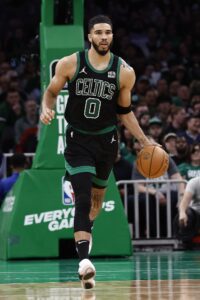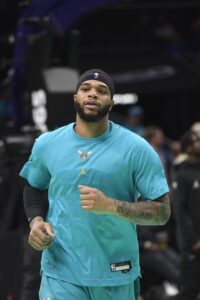Paolo Banchero believes the Magic should be in the conversation with the Eastern Conference’s top teams, he declared on ESPN’s First Take (hat tip to Dan Savage of NBA.com).
“We feel like we’re right there,” the Magic’s star forward said. “We’re right there with all those (elite teams in the East). I remember last year, we started the year off as a top-two, top-three seed and everybody thought it was a fluke. Everybody thought we were going to be a play-in team and drop out the top of the East. We finished strong and got the fifth seed and had a chance to really grab the two seed at the end of the season. We were right there last year.”
Orlando finished with a 47-35 regular-season mark and was eliminated by the Cavaliers in the opening round of the playoffs.
The best-of-seven series went the distance and Banchero showed why he’d been named an All-Star in February. He averaged 27.0 points, 8.6 rebounds, 4.0 assists and 1.1 steals per game during the postseason.
Banchero viewed it as a learning experience.
“I learned how to kind of slow the game down in the playoffs,” he said. “The first two games of the series in Cleveland, I felt a little sped up. I turned the ball over a lot. From Games 1 and 2 to Game 3, I think that’s where I made that jump, that adjustment and started to really slow the game down. I started to be really intentional (and) pick my spots on the floor to score and play-make.
“I also learned that you have to be in elite shape – not only physically, but mentally (in order) to deal with a seven-game series. It’s fun to go against the same team over and over, but it’s also a huge challenge. I think that’s something I took and will definitely use for next year.”
The Magic should be a more dangerous playoff team with the addition of shooting guard Kentavious Caldwell-Pope. Orlando brought in the former Nuggets wing on a three-year, $66MM deal in one of the biggest free agent signings this summer.
“Getting KCP is going to help us a lot,” Banchero said. “That’s a guy that’s won two championships in the last five seasons. He’s been around some of the greatest (players) of all-time. So, he’s going to be able to come out and make a huge difference for us. (Also), we’re a really young team and getting that playoff experience (and) a top-five seed last year (gives us) a lot of momentum heading into next season.”
Banchero, who doesn’t turn 22 until November, has lived up to his billing as the top overall pick in 2022. Orlando surprised many people by picking Banchero at that spot after his one-and-done season with Duke.
He’ll be eligible for a rookie scale extension next summer and it’s a lock that he’ll get a max offer from the Magic.
“Orlando took a chance on me when they drafted me, and I am forever grateful for that,” he said. “I give them my love and respect for that because nobody knew that I was going to go number one. I didn’t know I was going to go number one. So, they put the trust in me to take that chance and take me number one. After that, I felt like it was my job to help them reach heights that haven’t been reached in a long time … We’re trying to take (a huge) jump next year and keep taking it one level at a time.”
Banchero’s appearance on the ESPN show can be viewed here.

 [RELATED:
[RELATED: 
 The Hornets’ 2024 lottery pick doesn’t come without risk either, albeit for entirely different reasons —
The Hornets’ 2024 lottery pick doesn’t come without risk either, albeit for entirely different reasons — 